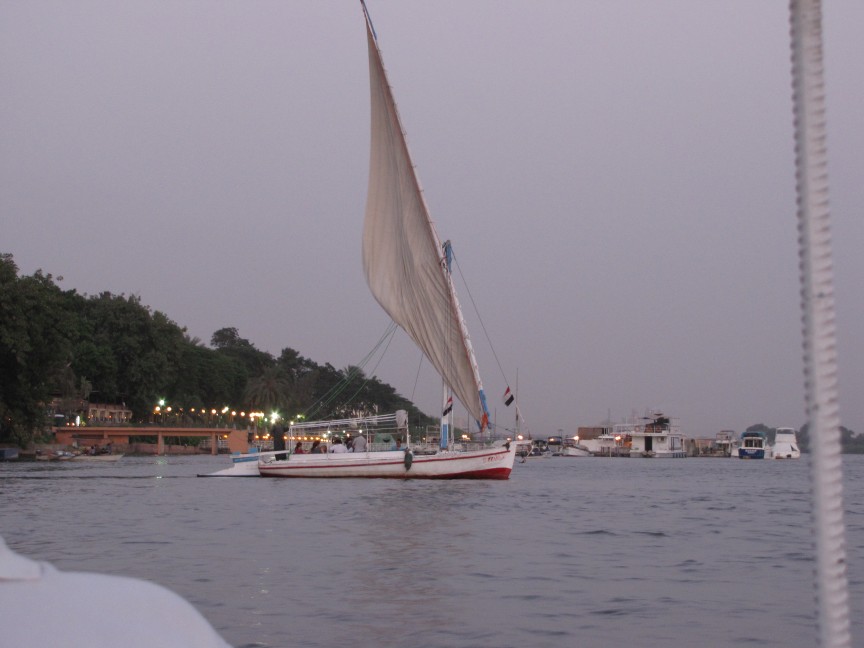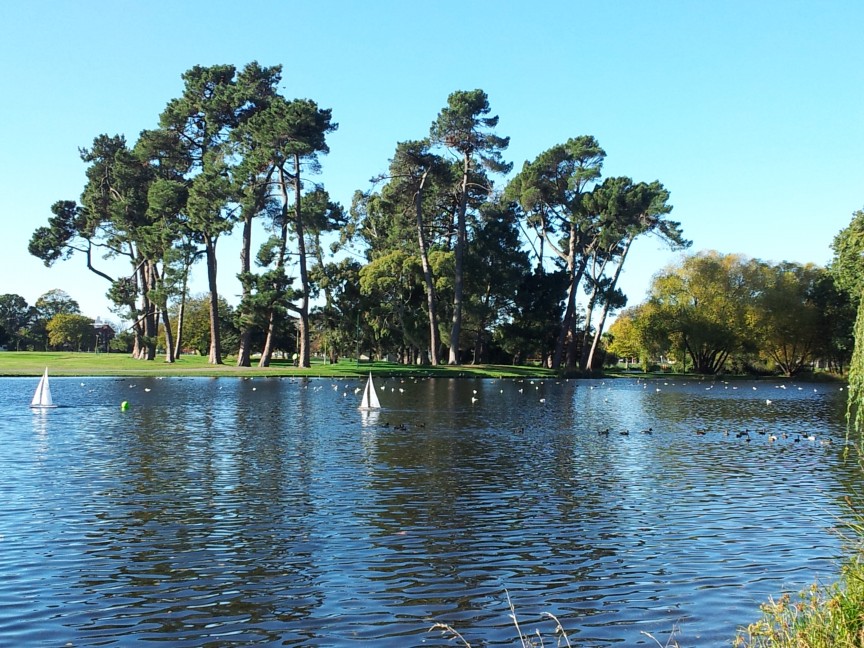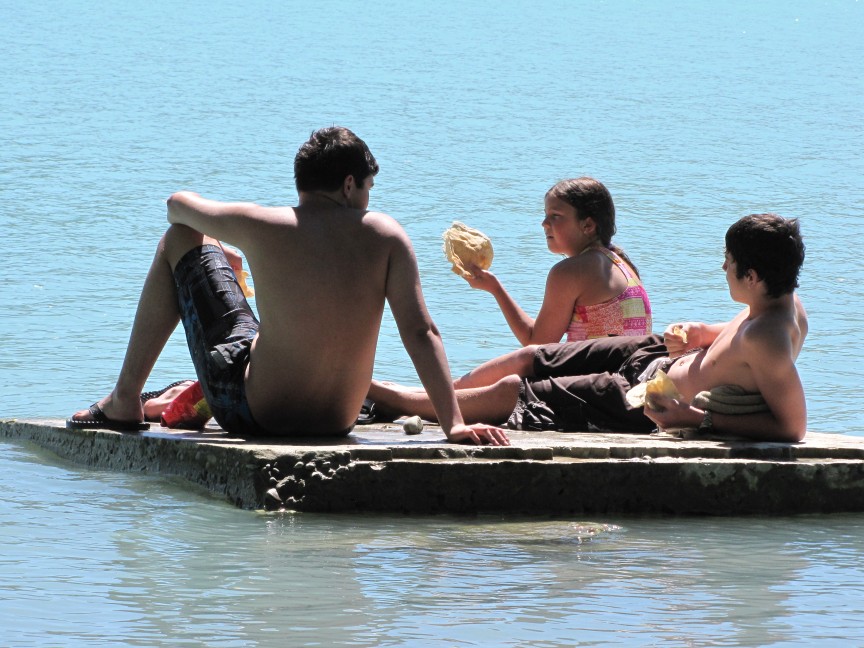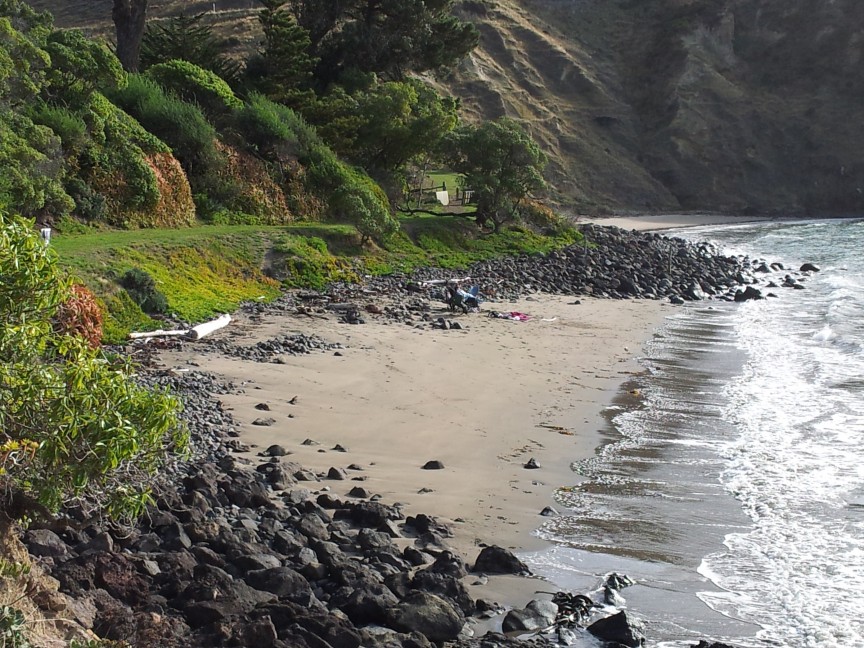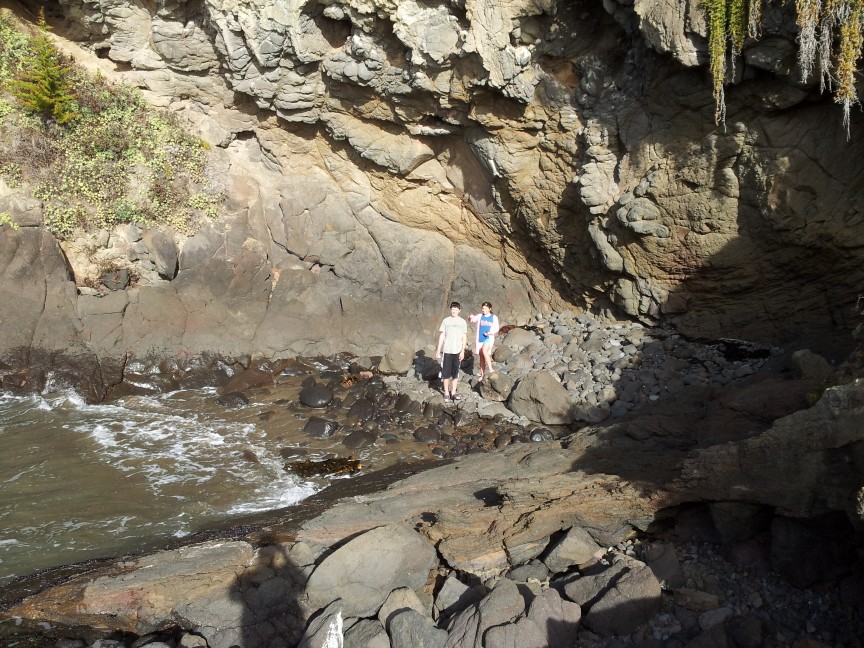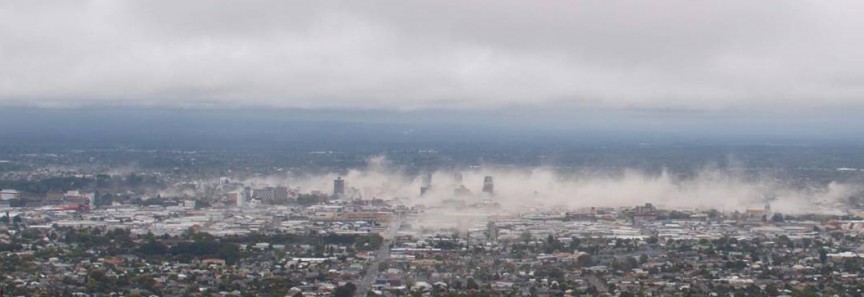Sailing on the River Nile
My last post got me to thinking about the last time I went sailing, and it turns out that it was a Felucca trip out on the River Nile, not too long ago. I found that Cairo was an engaging city, with a fantastic blend of modern society and reminders of ancient civilization. While most people want to rush off an see the pyramids, myself included, it seemed that an evening on the River Nile allowed a quite different perspective.
Stepping onto a Felucca is like stepping back in time – not stepping back 10, 50 or 100 years, but stepping back to the days of the Pharohs. These simple wooden boats ply the river now, just as they have for centuries. I suspect the ‘captain’ of today is no different than in times past … a wizened old man with a quick smile, who tucks his Galabeya (tradition Egyptian male dress) around his waist, squats at the stern and steers with his feet. Felucca’s are usually furnished with cushions on the seats around the gunwales and feature a fixed table in the middle, perfect for bring-your-own picnic or party.
With the wind, we sailed downriver while the sky faded to black. The city lights seemed somewhat distant, but a reminder of the modern age. It seemed that many of the other boats were filled with locals who were enjoying the cool evening on the river, although I’m sure there were other travelers soaking up the experience as well. My friends and I had bought some fresh bread, and other local fare, and were able to enjoy a lovely meal while tacking to and fro across the river. While 2-3 hours on the river sounds like a long time, I can assure you that it seemed to go much too fast – and I wasn’t at all ready for the evening to end (but couldn’t miss my early morning flight the next day). Multi-day trips up/down the river are possible, and if you have the time – would be an incredible experience.
Dad’s Recommendation:
When in Cairo, or elsewhere along the River Nile, take some time to go out in a Felucca. Plan ahead so that you have all you want to eat and drink – but don’t do this the night before your flight home.
Yachting at lunch
I like yachting. I especially like watching the America’s Cup or Round-The-World races. However, I was captivated by another class of yachts that I stumbled across at lunch time a few days ago … model yachts.
While 12-15 pilots intently walked the shore making critical adjustments to their radio controls, the ducks and swans politely observed some unofficial right-of-way rules. I must have missed the fleet start, so couldn’t capture a photo with more than 3-4 yachts in any one frame … so just imagine the lake is bigger, and there are more yachts out racing.
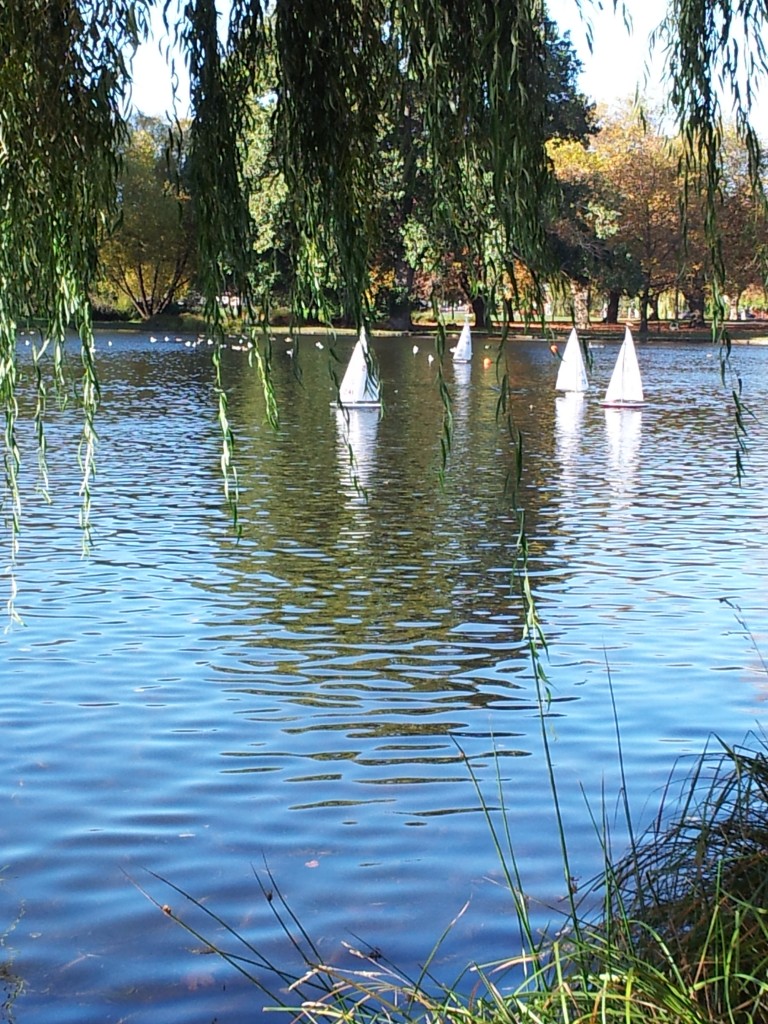
From my vantage point under a weeping willow, these few yachts appear to be racing to avoid the wooden spoon
I must admit that watching these small, sleek yachts swiftly navigating a course of small bouys, all while enjoying the autumn sun and a gentle breeze, makes for the most enjoyable lunch time break.
Dad’s Recommendation:
Take lunch out into the park instead of eating out or staying in the office lunch room … and if you have the opportunity to watch some model yachts – take some time to do just that.
Sibling bonds
As a parent, I’m very interested in teaching our kids important life lessons – like ‘treat other people the way you want to be treated’. Sometimes the lack of noticeable progress can be quite frustrating, and other times they clearly demonstrate that something has sunk in (even if it’s only briefly).
This past summer we visited Lake Tekapo for a few days, and I wanted to share one moment with you. Even although the lake water is quite cold due to the glacier runoff, I took the kids for a swim at a spot where the water was supposedly a little warmer. While there, they found a large concrete block some distance from the shore on which to sun themselves warm after getting sufficiently cold playing in the water. I snapped this photo while they were relaxing, sharing a snack, and soaking up the warmth of the sun. It seemed to capture a glimpse of the positive sibling bond that can be shared between brothers and sister – as opposed to sibling rivalry which is much, much more common.
It would be nice if they could have more of these moments of friendship and cooperation, even throughout the teenage years. I am posting the photo as a reminder to myself that there’s always hope.
Dad’s Recommendation:
Don’t give up on an adventure just because the water is too cold, or some other seemingly unpleasant impediment … something surprising may happen as a result.
Just a little bit further … follow the road to the very end
It’s easy to visit the popular locations, those which are easiest to reach, the place that everyone knows about, and it’s usual the default / safe plan for your trip. However, if you are prepared to be a little bit more adventurous – consider exploring what’s further down the road … and perhaps follow it to the very end. Obviously it’s a good idea to have a glance at a map before you do this, as in some parts of the world the road may take you thousands of miles across a large continent.
Our family recently followed the road to the end, primarily to find the last beach along a particular volcanic harbour in New Zealand. After passing several small townships, we reached the end of the pavement at a nice looking holiday-house type community. However, we continued onto the gravel road, past the “No Exit” sign, and after a short, but adventurous, drive – we found a beach that our daughter later said was her “favourite beach in New Zealand!” Best of all, we were the only ones there for most of the time we visited!
While this little beach looks remote, it was only about 10 minutes from the nearest shops, and about 40-45 minutes from the city. We loved the fact that it felt remote, and our view included no developed land (no buildings were in sight) plus a nice view out over the Pacific Ocean.

Feeling remote – not far from town. (Note, if you sailed straight over the horizon, the next place you land would be Mexico!)
We also explored a very short walkway, and found “the niftiest, coolest little rock cove in all the world” – according to our son Luke. Mind you, I’m with him on this one as it was totally awesome – and photos can’t do it justice (it’s a 4D experience, not suitable for 2D pictures). There were little caves and tidal pools, shells and shellfish, cool volcanic rocks, natural hanging gardens, old jetty piles from some bygone era, and lots of interesting things for kids of any age … or even those of us just young at heart!
You’ll note that I’m not sharing the exact location of these beaches … primarily because I don’t want to find it crowded the next time we visit!! Obviously some of the locals know about it, but I’d prefer to keep it a well kept ‘secret’.
Dad’s Recommendation:
Check the map, but don’t be afraid of exploring a little bit further down the road!
Disaster Recovery – Overview
Some of you may know that I have been involved with some large scale disaster recovery efforts – from an infrastructure planning and reconstruction standpoint (tsunami in Sri Lanka, war in Iraq & Afghanistan, and earthquake in Christchurch, New Zealand), with recent expertise on Infrastructure Resilience.
In overview, it does seem like there are some very common phases which people may go through after a big disaster:
Denial – this isn’t happening to me!
Isolation – nobody understands what has happened to me!
Anger – this shouldn’t be happening to me!
Bargaining – what will it take to make this go away?
Depression – there is no hope of ending what has happened to me!
Acceptance – this happened to me, and here’s what I’m going to do.
The phases above are commonly associated with the grief cycle, which is a little different to the disaster recovery cycle which could be defined as:
Preparation – the best benefit for every dollar invested – not well publicised
Disaster Event – it’s never convenient or expected – more often captured on handheld smartphones etc
Response – civil defense, search and rescue, and emergency services – all on TV
Restoration – temporary restoration of services, facilities, and infrastructure (aka short-term recovery)
Reconstruction – permanent restoration of services, facilities, and infrastructure (aka long-term recovery)
Improvements – the addition of systems, methods and materials that we didn’t have before (aka mitigation measures)
-
Debris removal and “make-safe” measures
-
Demolition of unsafe structures
-
Protection of iconic heritage structures
-
Repair or reconstruction of infrastructure
-
Repair or reconstruction of damaged homes
-
Repair or reconstruction of community facilities
-
Repair or reconstruction of iconic city facilities
However, the common problem in the implementation of these works is that we need empowered leaders who communicate and engage with the appropriate stakeholders at the appropriate time, to develop collaborative outcomes that everyone can embrace and support. Further, there are another six phases which we should be aware of – common to many projects and apparently they are also common to recovery. I’ve added some phrases which you might hear … or more likely won’t:
- Enthusiasm (“We’ll fix everything back better than it was before”)
- Dissillusionment (“We’ll never be able to achieve everything that was promised”)
- Panic (“Everything is costing more than we expected, taking longer to build, and not as nice as we hoped. Hire more people!!”)
- Search for the guilty (“Surely somebody screwed something up, and we’re going to find out who”)
- Punishment of the innocent (“We found somebody to be the scapegoat – too bad they did all the good work”)
- Praise and glory for the non-participants (“Look at all the great work I did”)
It doesn’t seem to matter where you are in the world, but sadly it appears we make the same mistakes over and over again. I am reminded of the wisdom in one old proverb which says:
It doesn’t matter how far down the wrong road you have gone, turn around.




